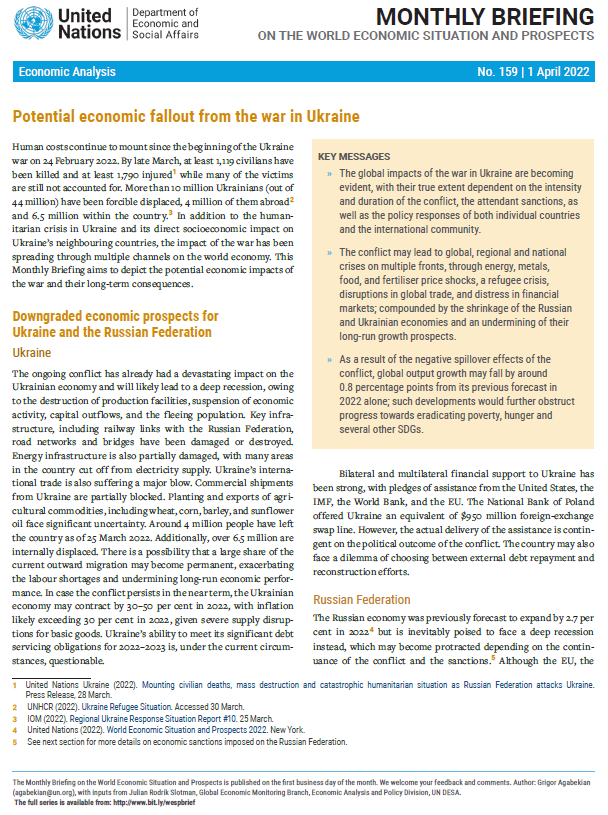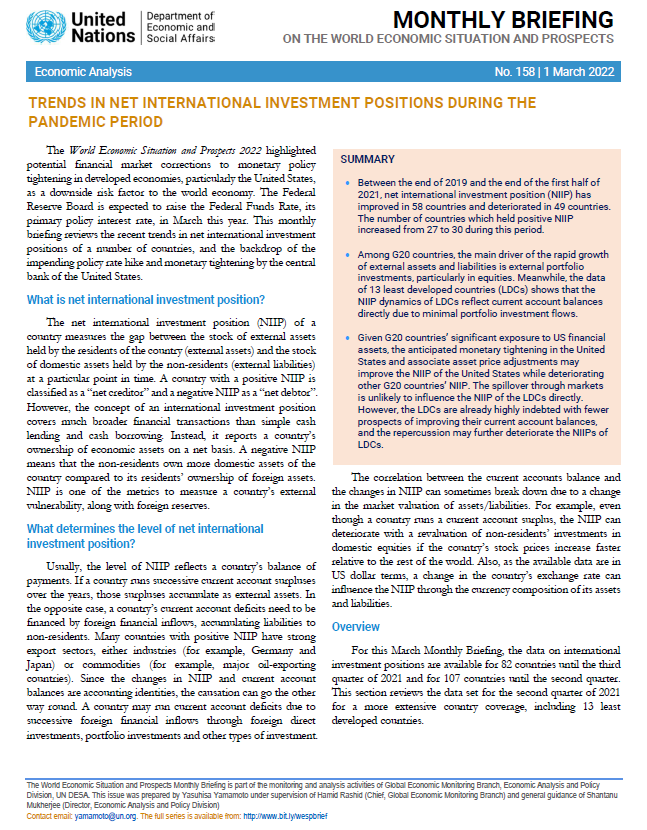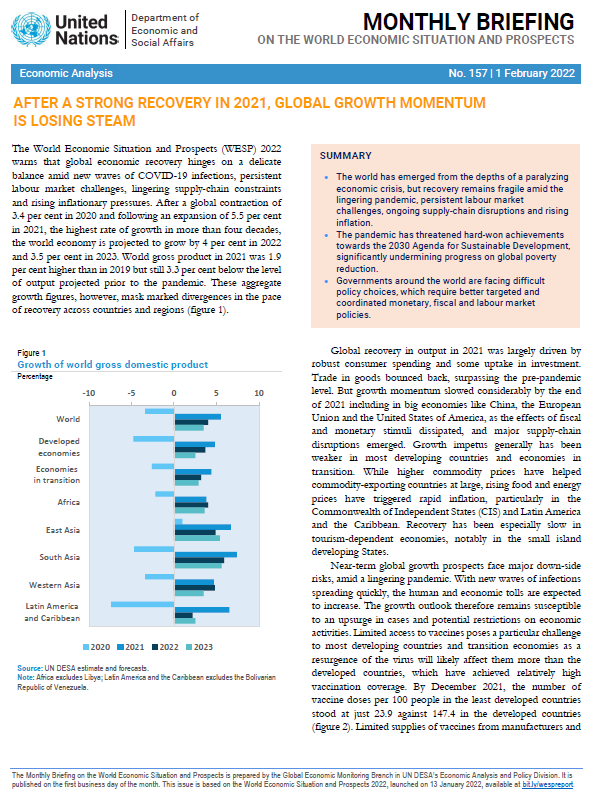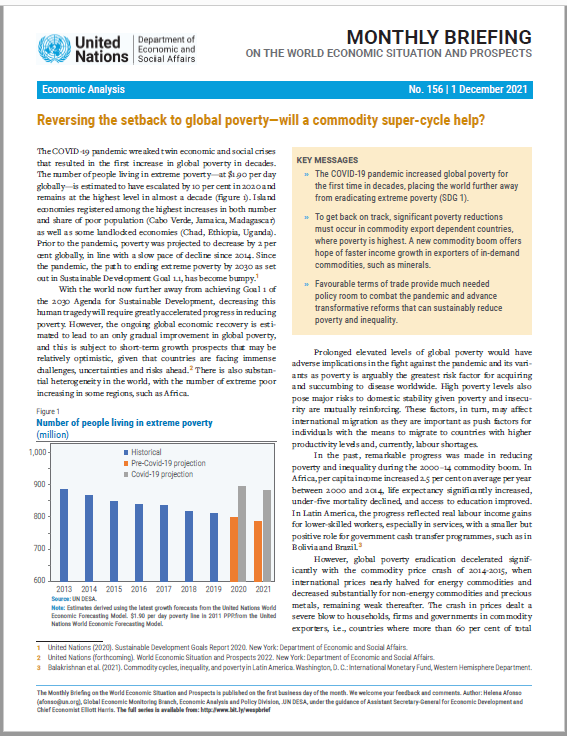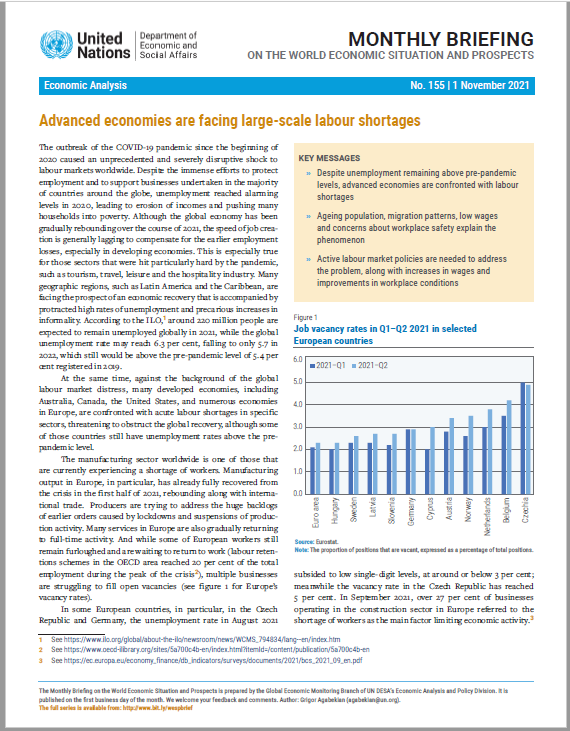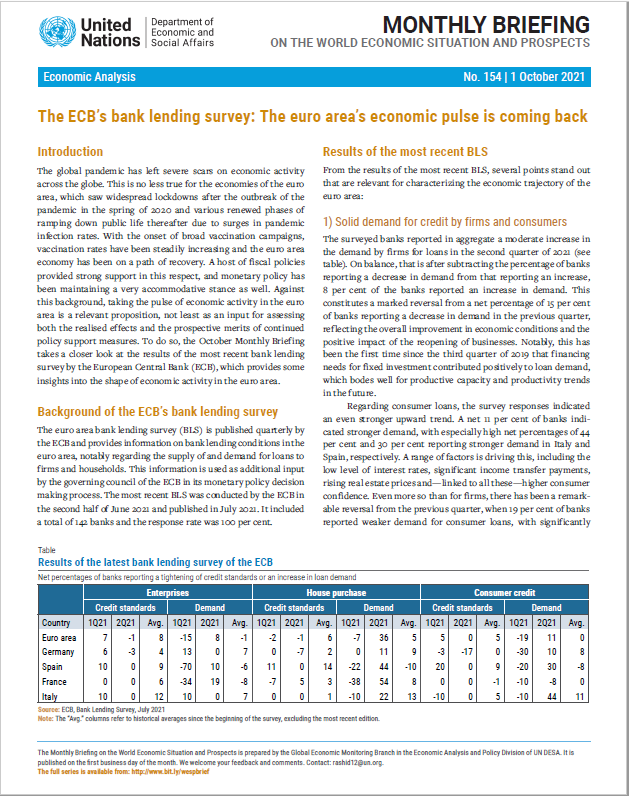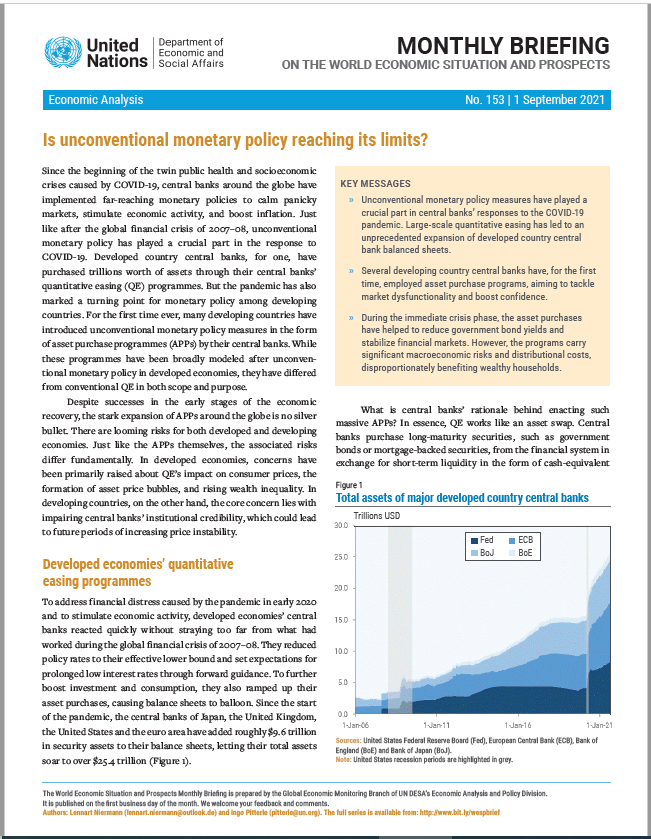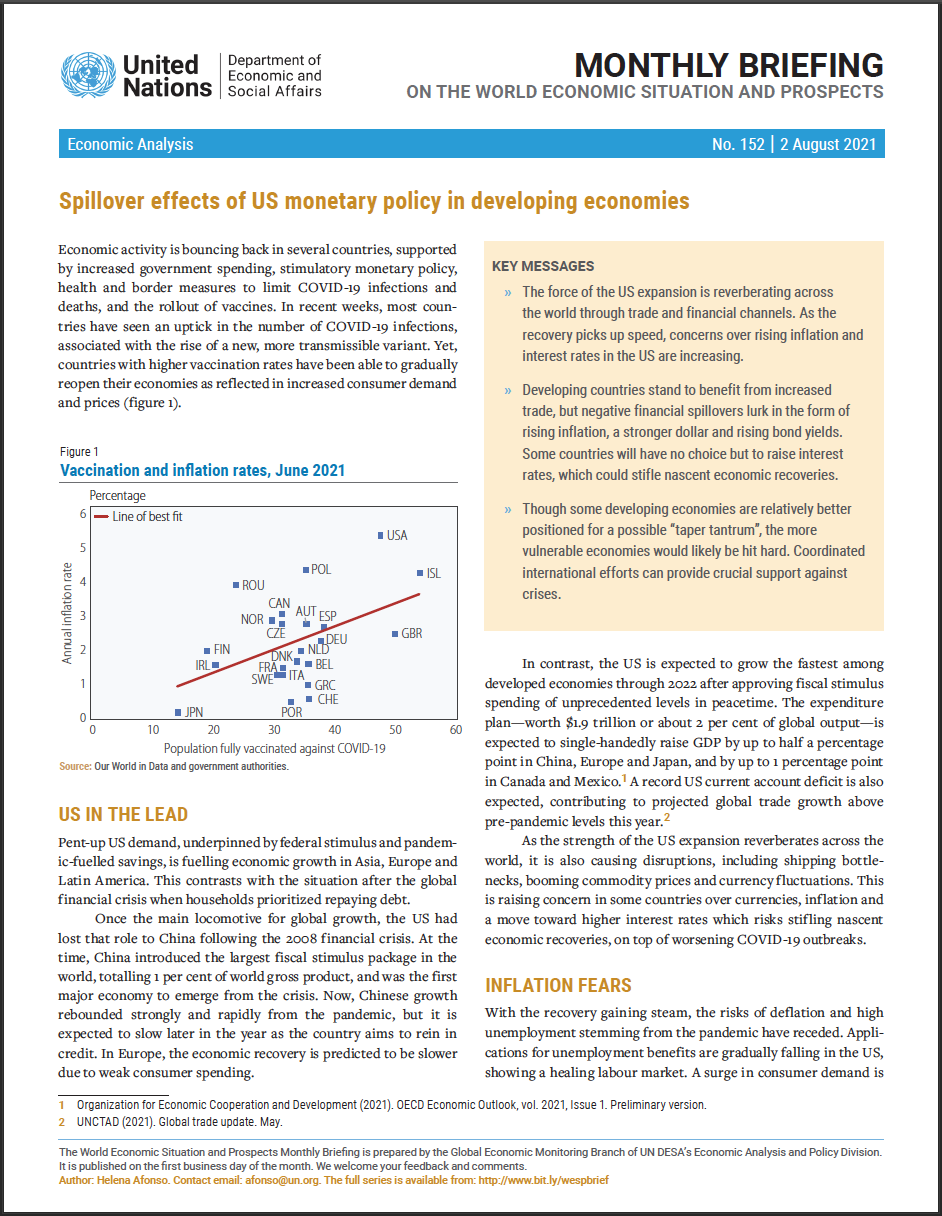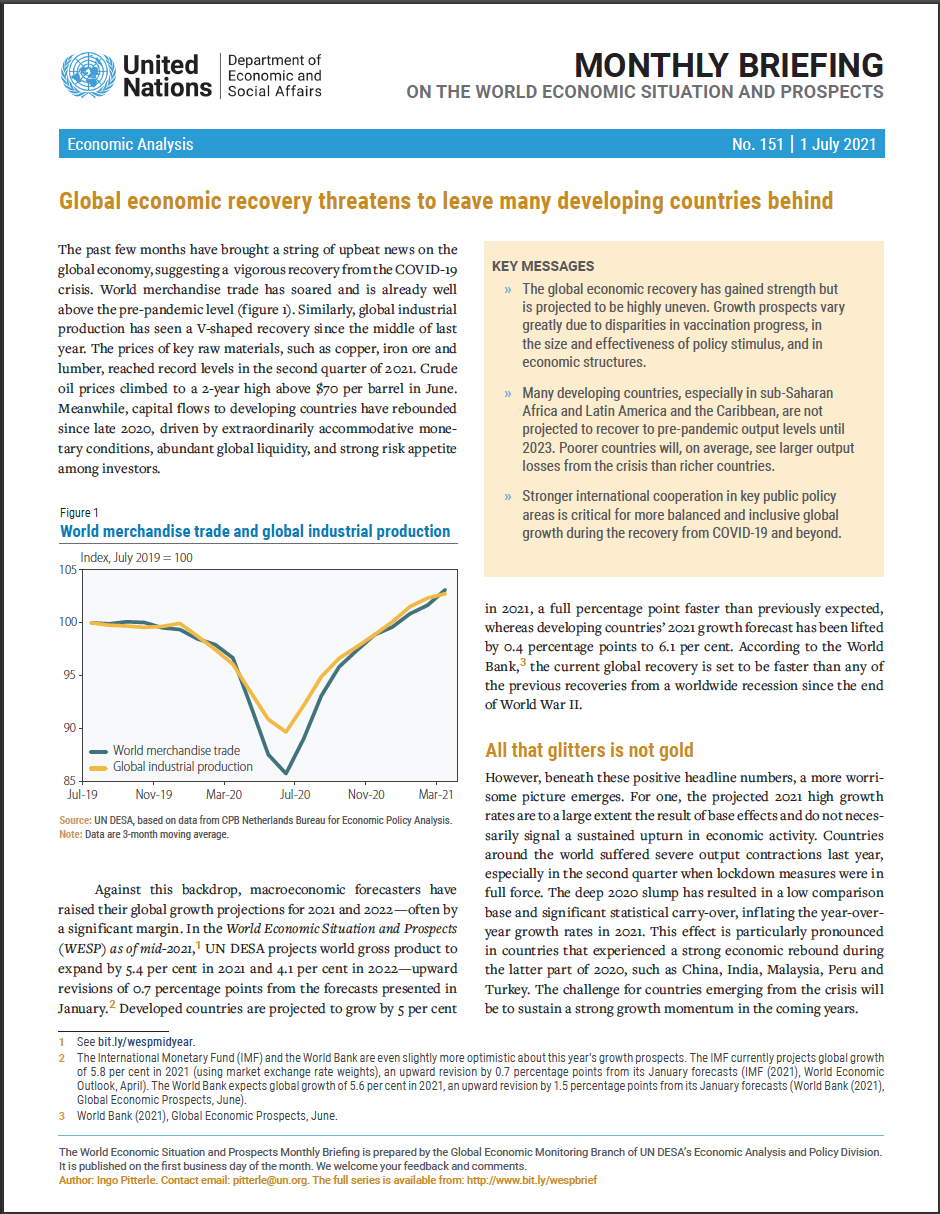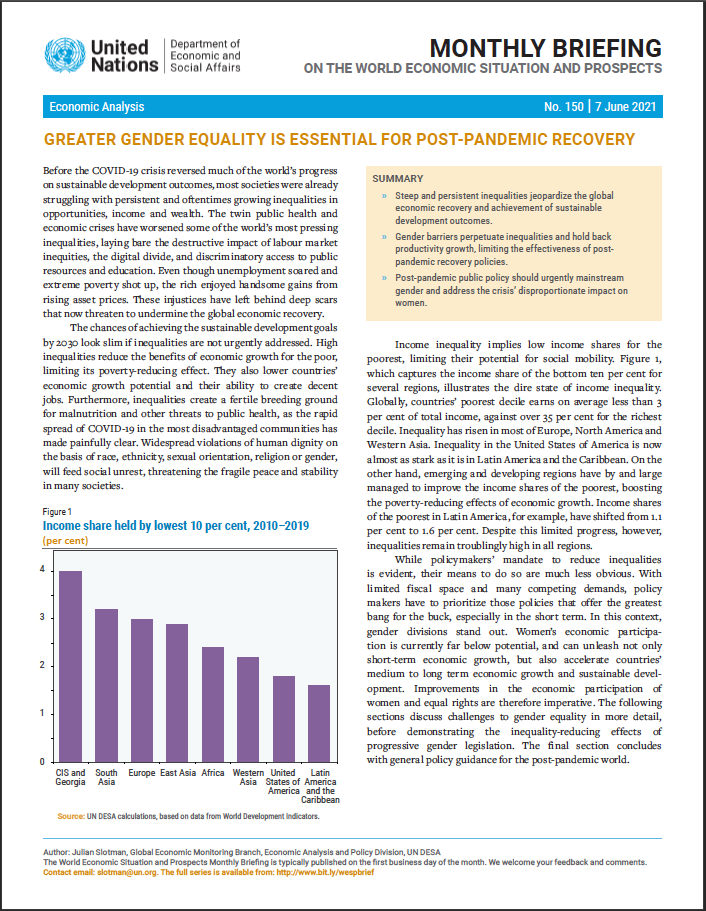Publications
Displaying 31 - 40 of 189
Download the PDF Potential economic fallout from the war in Ukraine Human costs continue to mount since the beginning of the Ukraine war on 24 February 2022. By late March, at least 1,119 civilians have been killed and at least 1,790 injured while many of the victims are still not accounted for. More than 10 million Ukrainians (out of 44 million) have been forcible displaced, 4 million of them abroad and 6.5 million within the country. In addition to the humanitarian crisis in Ukraine and its direct socioeconomic impact on Ukraine?s neighbouring countries, the impact of the war has been spreading through multiple channels on the world economy. This Monthly Briefing aims to depict the… World Economic Situation and Prospects: April 2022 Briefing, No. 159
Download the PDF After a strong recovery in 2021, global growth momentum is losing steam The World Economic Situation and Prospects (WESP) 2022 warns that global economic recovery hinges on a delicate balance amid new waves of COVID-19 infections, persistent labour market challenges, lingering supply-chain constraints and rising inflationary pressures. After a global contraction of 3.4 per cent in 2020 and following an expansion of 5.5 per cent in 2021, the highest rate of growth in more than four decades, the world economy is projected to grow by 4 per cent in 2022 and 3.5 per cent in 2023. World gross product in 2021 was 1.9 per cent higher than in 2019 but still 3.3 per cent below… World Economic Situation and Prospects: February 2022 Briefing, No. 157
 Welcome to the United Nations
Welcome to the United Nations
